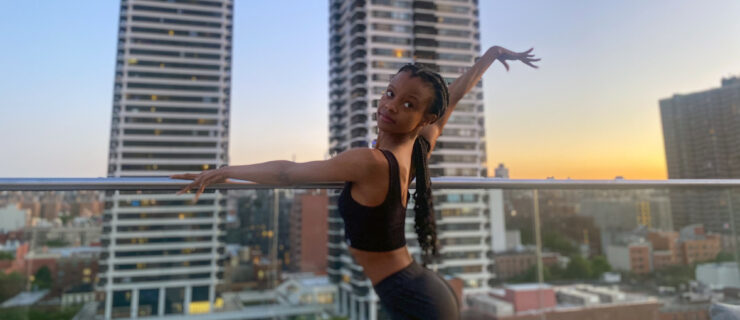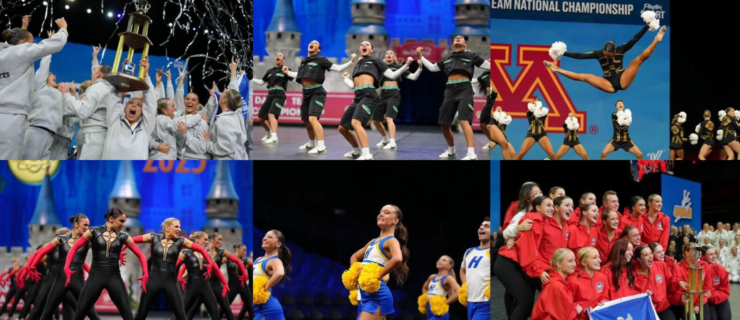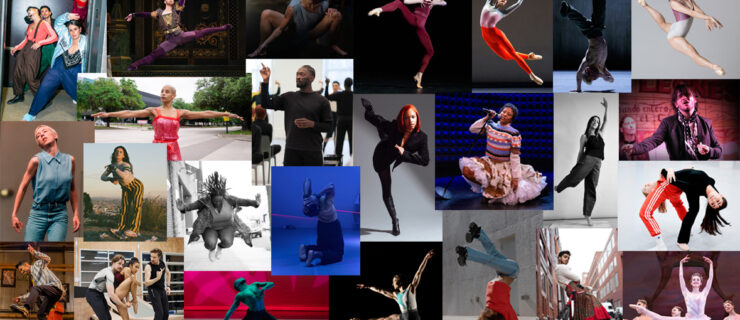How to work as a group
When done well, lyrical can transport us to a place where we feel the power of dance with our hearts—not just our heads and feet. A high kick becomes more than a sign of a dancer’s flexibility and control; it’s transformed into an expression of passion or frustration. In lyrical, every step and gesture can come to mean more than it seems, culminating in a profoundly moving experience for dancer and audience member alike—picture Jessica and Will’s lyrical routine to “Silence” on “SYTYCD.”
But balancing individual emoting and group harmony is tricky. Gone are the days when a lyrical routine was synonymous with a ballad, a dress and a pained expression of longing. As a genre, it’s technically broader and thematically more open-ended than ever. “People used to define it as ballet technique, jazz style and a Céline Dion song,” says Nicole Foisy, United Spirit Association’s Dance/Drill Program director. But now, “There are many different thoughts and emotions you can express,” she says. With storytelling intricacies and emotional depth, lyrical is difficult precisely because it’s so personal: Not every dancer has the same expression for “concerned” or “hopeful.” So how can a group of dancers become unified in a lyrical routine? DS investigates.
Preparing
Train.
To achieve onstage unity, the dancers must be at the same level technically, says Denise Heard, founder and co-director of Dance Makers of Atlanta, Inc., in Atlanta, GA. The more comfortable you are executing the steps, the more time you can devote to cleaning choreography and communicating emotions as a group.
Adjust your mindset.
A group routine poses distinct challenges. “This is not about ‘you, incorporated’—this is about showing off the piece,” says Melanie Gibbs, co-director of Boca Dance Studio in Boca Raton, FL. “The choreography is the third entity in the room. There are my needs as a choreographer, your needs as dancers and the needs of the piece. It’s our job to work together to satisfy the needs of the dance.”
Learning Movement
Look to the choreographer first.
While you may admire specific dancers in the room, when learning a routine, strive to imitate your choreographer. Pay attention to how movements communicate ideas and feelings and adapt to his or her style.
Ask questions.
Speak up while you’re learning the movement. “I’m probably the most annoying person in class. I always ask questions,” says Donyelle Jones, “So You Think You Can Dance” Season 2 finalist and instructor at Millenium Dance Complex in L.A. “Asking questions makes me able to adapt to styles.” Ask where your weight should rest at each moment and which direction your head should be pointed in. Be careful not to get carried away asking, though, since this can interrupt the choreography. Pay attention to the musicality of the piece and watch a choreographer’s core to see where each movement originates.
Connecting and Communicating
Discuss, set and perform emotions early.
While you still have mirrors in the room, work on emoting as part of the choreography: “It needs to be ingrained in the movement itself,” Foisy says. Make sure you have ample time to rehearse, so you can see what your “searching” or “joyous” face actually looks like. Also, practice staying in character when you make a mistake because flinching is a surefire way to ruin the fluidity of a performance.
Create your own story.
“Choreographers may come up with an open-ended message and allow dancers to come up with their own experiences,” says Foisy. “Then it’s really a personal thing.” Your interpretation of a love song, for example, doesn’t need to be traditionally romantic—it can be about how much you love spending time with friends, Jones explains. While “love” may be interpreted differently, all dancers communicating their idea of one emotion will create a unified look.
Embrace differences.
Distinct performance styles among dancers can be turned into an asset in group dances, and layering choreography is a popular and effective tool. “I find layered choreography [adding dancers in every few counts] a lot more interesting. You get to emphasize your students’ strengths,” explains Heard. If you have a featured role or partnering section, use that moment to infuse your unique qualities into the choreography. “But don’t get caught up in the entire routine doing solos,” Heard adds. “It needs to have its moments where everybody comes together.” During the sections when you’re doing unison work, do your part to set the scene and mood without distracting the audience from the whole picture.
Onstage
Work with each other.
“If everyone’s off in their own world, it’s just a bunch of solos,” says Foisy. Designate moments to connect with your fellow performers, and feed off each other’s energy onstage. Eye contact can go a long way toward putting you on the same emotional and physical page as your fellow dancers.
Focus on the moment.
If everyone stays honest with the performance, that authenticity will be a powerful common thread running through the routine. “Give me something genuine,” Heard says. “Show me you.”
Laura De Silva is a freelance writer whose work has appeared in
Dance Teacher and Décor and Style magazines.
Photo: Courtesy of United Spirit Association



